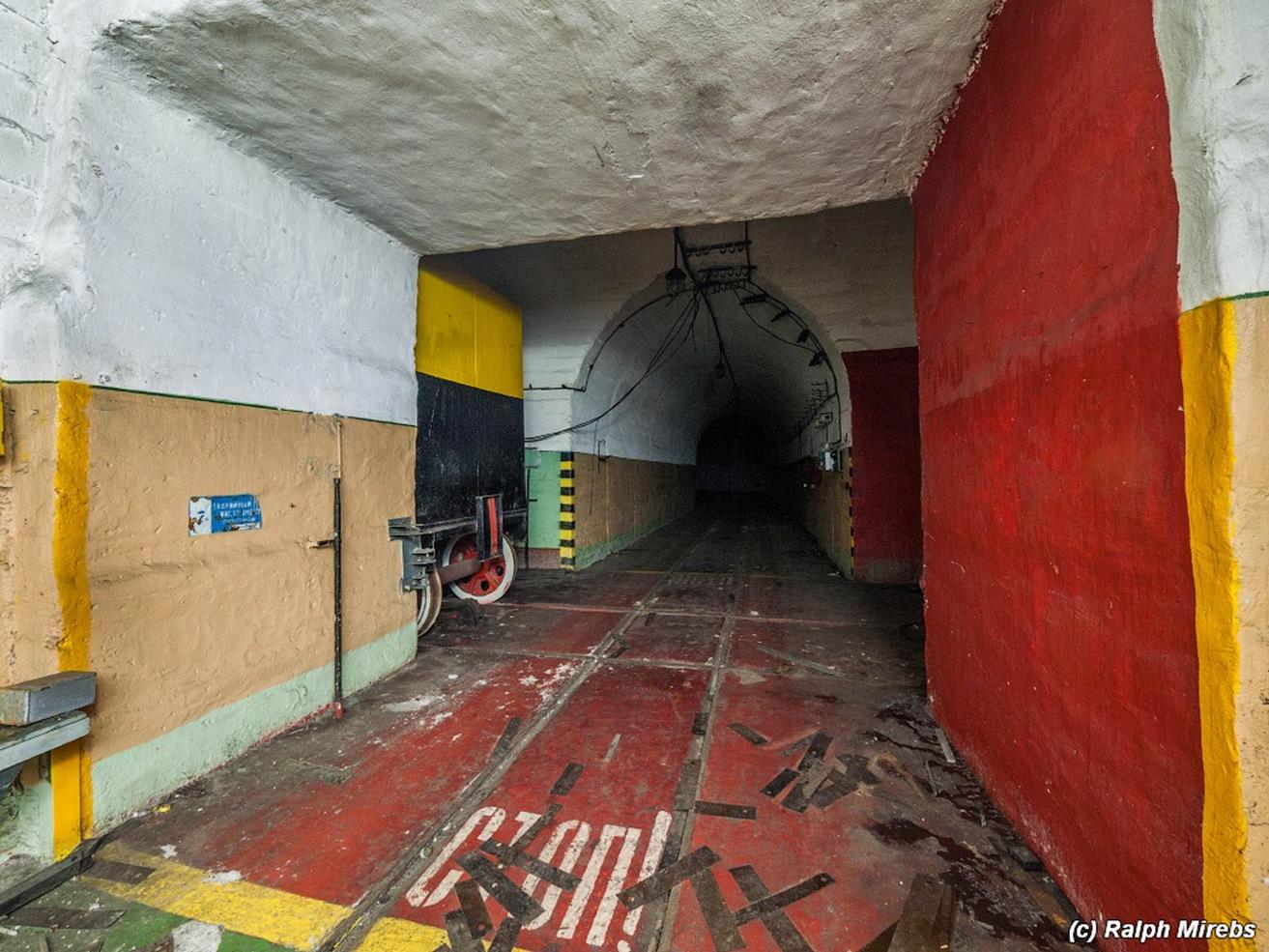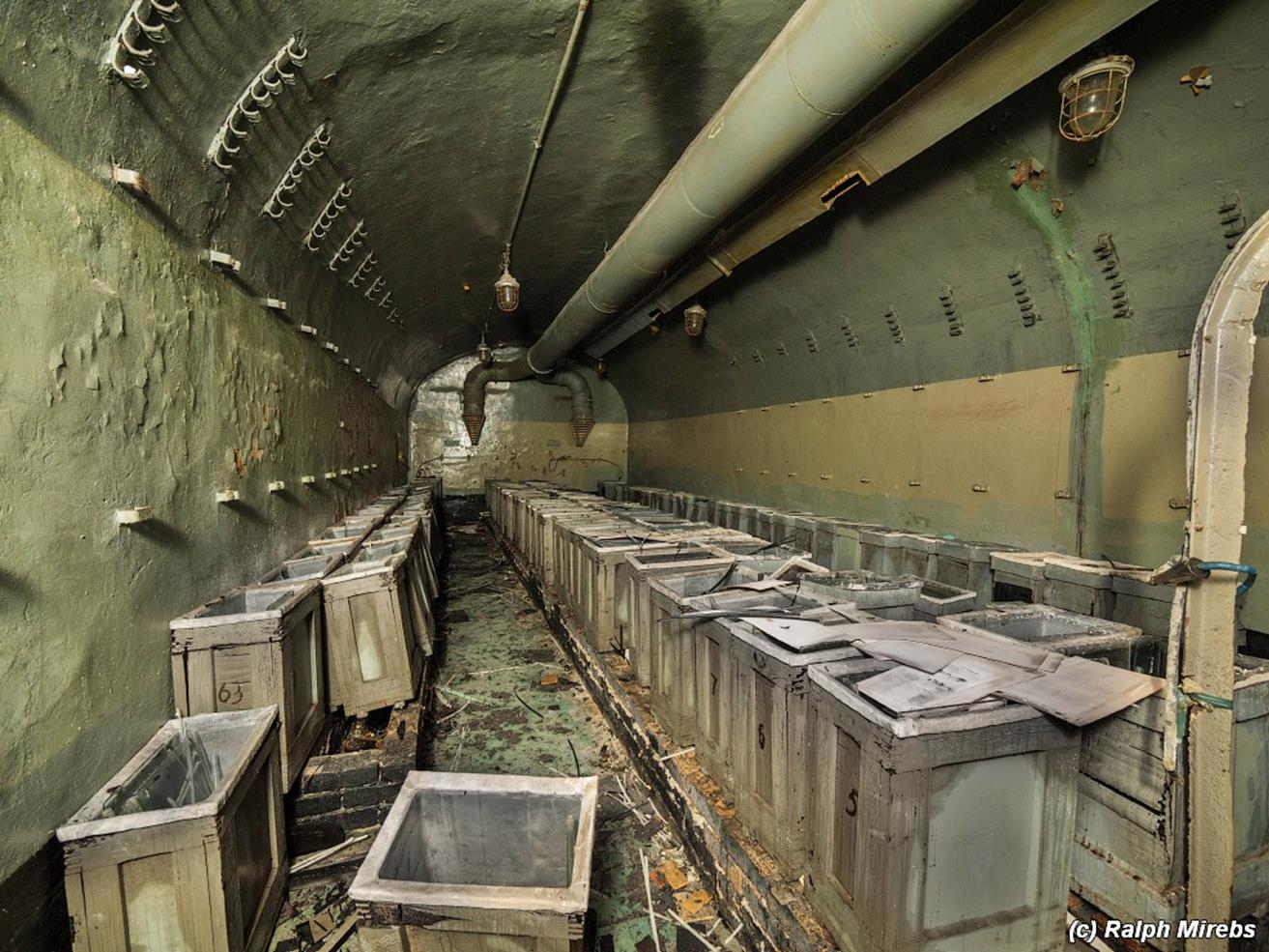An abandoned nuclear weapons depot
The structure has two entrances, but they are numbered 14 and 15 in order to confuse the enemy.
In front of each of the doorways there is a building where the stored weapons were loaded from the vehicles onto railway carts and back.
After that the carts started rolling along the railway tracks and vanished in the depths of the mountain.



The central tunnel shaft is shaped like a horseshoe and pierces the mountain. There are storage spaces and auxiliary rooms adjoining it on both sides.
The tunnels have rather high ceilings, and there are pipes of various purpose mounted to them. Near the doorways the pipes are rusty, but deeper in they look like new.



The structure was built in the mid-1950s for supplying nuclear arms to the soviet strategic bombers near the shortest way to the USA, across the Bering Strait.
Later, there were also missile men who were also provided for. The storage remained operational until 1986 when it was shut down in accordance with the disarmament agreements.
The military part was passed on to the tank forces, and then the town was completely deserted in 2002.



Various nuclear weapons were stored inside the building; some were made for different types of missiles and others for bombs.
There were enough potential clients nearby: a strategic aviation airfield and ground-mounted R-12 missile launching pads. Because of such variety there are quite a few storage halls: five of them.


The entrances to each of those, just like the central tunnel, are barred with massive gates that provided protection against a blast wave.
These gates are composed of a huge concrete block covered with metal and mounted on railway tracks.



The gate was set in motion with the help of a manually controlled hoist as well as an electric drive, but there were still some crevices left and the lock was not hermetic.
That’s why in storages that were built later on there are gates of a different type: two-leaved and arched.




The halls themselves are, in fact, different sized spaces carved in the rock. There are five of them, excluding the weapons assembly hall, and in all of them there was a overhead crane track installed for moving around heavy loads.
Of course, all of them are empty now.


Inside there are two lines of narrow-gauge tracks and a triangular junction in front of the entrance.


The largest hall was designed for assembling and testing the units. There is a painting depicting different military branches’ flags on the back wall, and the floor tiles are numbered.
In this hall, electric circuits and batteries on the warheads were tested, working efficiency of units were confirmed using test signals, ignition cylinders were installed and wired up, warheads were attached to the carriers, the carriers were charged with gases and liquid fuels.



A transverse wall separates a small part of the hall in the center of which there is a structure for fixing the units. Railway tracks go into that part and pass through it, and there is a hole in the floor for accessing the units from the bottom.

When I went on with exploring the site, I came across an interesting part of it. The hallways here were bent at 90 degrees, there were some massive hermetic doors, but it was completely empty.
Various elements that contained explosives were stored here — fuses, stage separation explosive charges, self-destruction units…









Refrigerator units. There are a lot of those here, one at each hall, and the equipment hasn’t seen neither an autogenous welder nor a copper collector yet.
It’s curious that the equipment is not Soviet, but made in Germany.






Two vent unit blocks, one at each of the doorways. There is waterproof fabric at the ceiling.


This is the battery room whose smell scares some bloggers in June 2014. Yes, there is still an acidic smell inside.


On the whole, the storage leaves a good impression. Yes, there are no rooms full of equipment remnants, but there are enough spacious tunnels with plenty of forks, lots of impressive doors and large halls.
Taking into account that the military left 20 years ago, all of it is quite well-preserved.

Images by RALPH MIREBS, reproduced with permission






